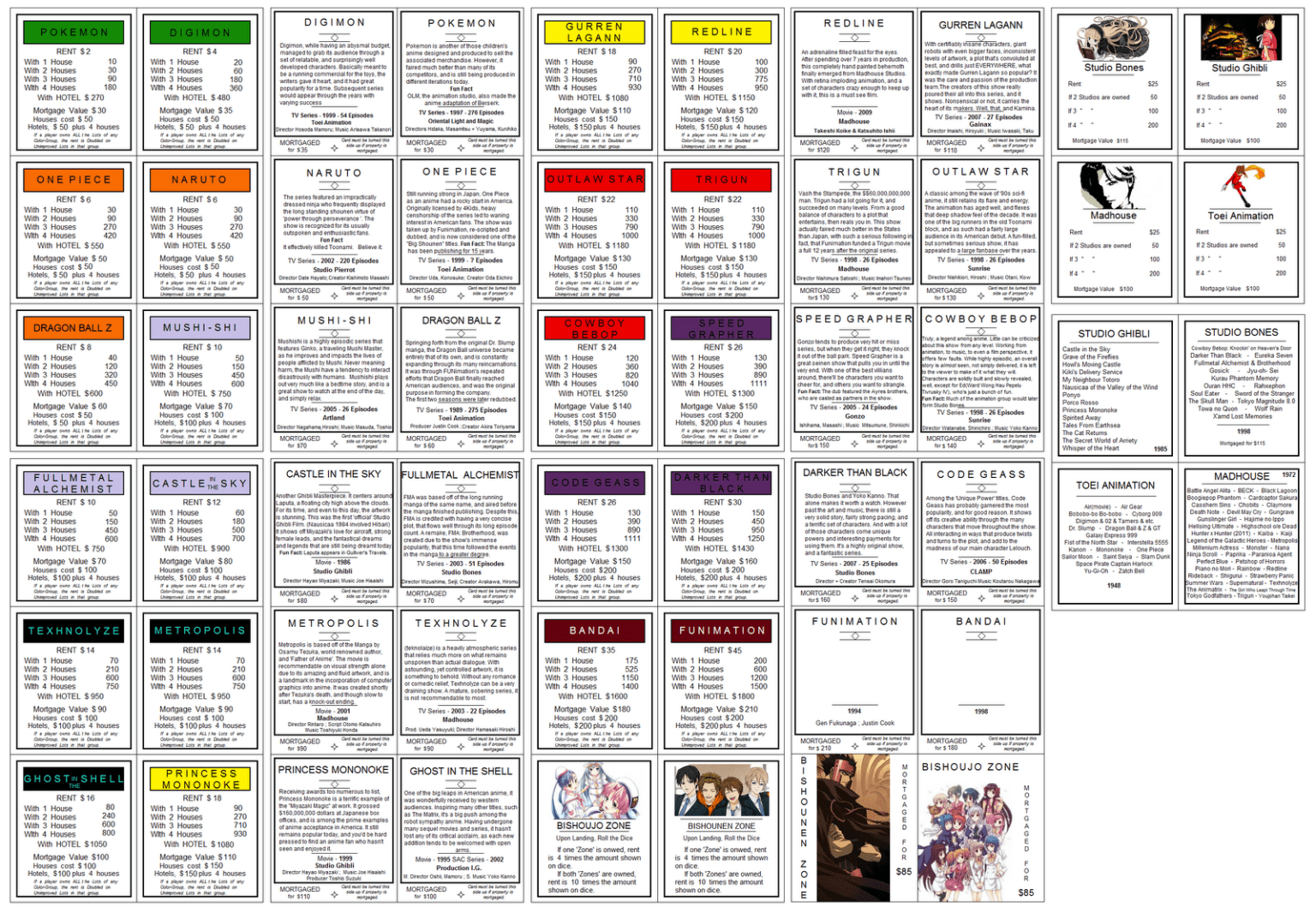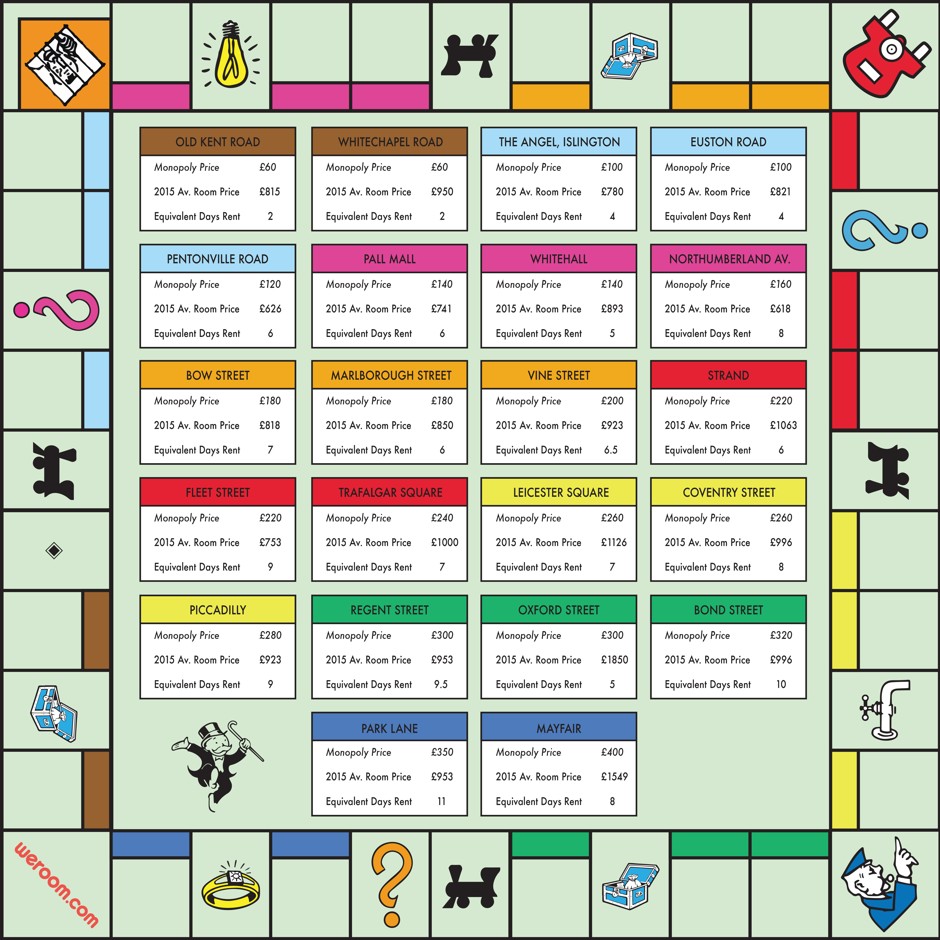

Landing on the Jail space by a direct roll of the dice (without being sent to Jail) in the corner between the Light Blue and Light Purple/Maroon properties means the player is "Just Visiting" and continue the next turn normally.
Monopoly properties free#
Standard (American Edition) Monopoly game board layout Free Parking version shown below, the properties are named after locations in (or near) Atlantic City, New Jersey. The board consists of 40 squares containing 28 properties, 3 " Chance" squares, 3 " Community Chest" squares, a " Luxury Tax" square, an " Income Tax" square, "GO", " Jail", " Free Parking", and "Go To Jail." In the U.S. This is the original and classic version produced originally by Charles Darrow, and later by Parker Brothers. Anspach published a book about his researches, called The Billion Dollar Monopoly Swindle, in which he makes his case about the purposeful suppression of the game's early history and development. Parker Brothers current corporate parent, Hasbro, again only acknowledges the role of Charles Darrow in the creation of the game. The game's name remains a registered trademark of Parker Brothers, as do its specific design elements.

As Professor Ralph Anspach fought Parker Brothers and their then parent company, General Mills, over the trademarks of the Monopoly board game, much of the early history of the game was "rediscovered."īecause of the lengthy court process, and appeals, the legal status of Parker Brothers' trademarks on the game was not settled until the mid-1980s. East Coast, contributed to the game's design and evolution.īy the 1970s, the game's early history had been lost (and at least one historian has argued that it was purposely suppressed - see below), and the idea that it had been created solely by Charles Darrow had become popular folklore, printed in the game's instructions, and even the 1974 book The Monopoly Book: Strategy and Tactics of the World's Most Popular Game, by Maxine Brady. Several different people, mostly in the U.S. By the early 1930s a board game named Monopoly was created much like the version of Monopoly sold by Parker Brothers and its parent companies through the rest of the 20th century, and into the 21st. Magie herself patented a revised edition of the game in 1924, and similar games were published commercially.

Magie's game was redeveloped by her, and other interested game players, many of whom made their own sets. Her game, The Landlord's Game, was commercially published a few years later. In 1904, an inventor named Lizzie Magie patented a game through which she hoped to be able to explain some of the economic ideas of Henry George. The history of Monopoly can be traced back to the early 1900s. Games Magazine has inducted Monopoly into its Hall of Fame. The game is named after the economic concept of monopoly, the domination of a market by a single seller.Īccording to Hasbro, since Charles Darrow patented the game in 1935, approximately 750 million people have played the game, making it "the most played board game in the world." The 1999 Guinness Book of Records cited Hasbro's previous statistic of 500 million people having played Monopoly. Players compete to acquire wealth through stylized economic activity involving the buying, rental and trading of properties using play money, as players take turns moving around the board according to the roll of the dice. Monopoly is the best-selling commercial board game in the world. Throughout this article, the unqualified use of currency denominations such as "$" or "£" generally refers to play money in the context of the game. Medium ( dice rolling, card drawing, luck) Players make their way around the Monopoly board, such as this German one.


 0 kommentar(er)
0 kommentar(er)
